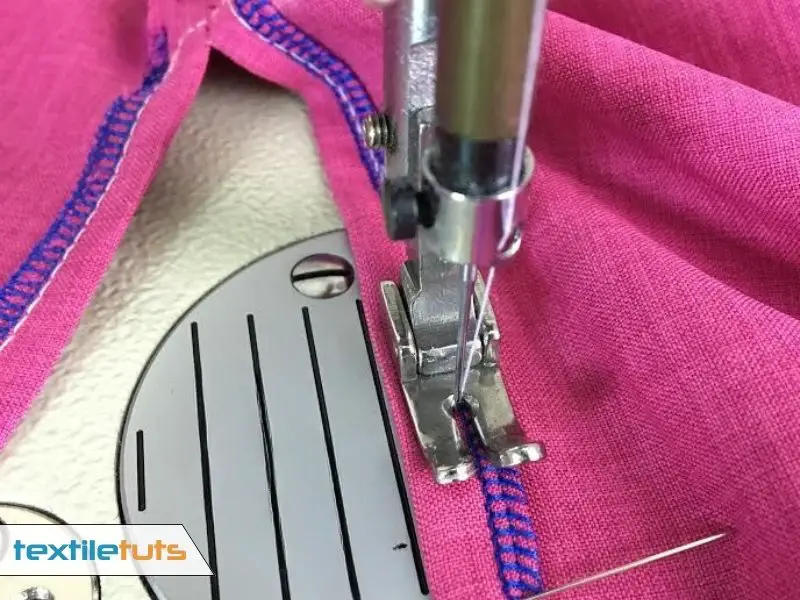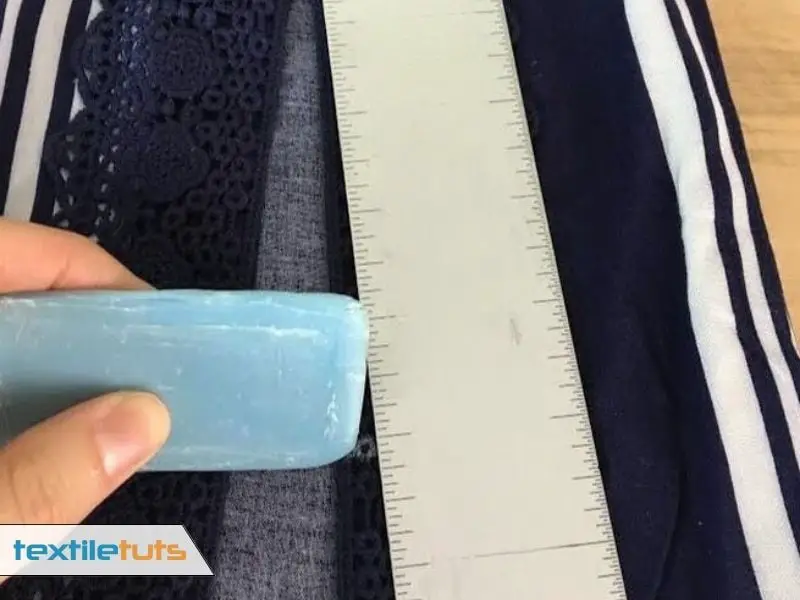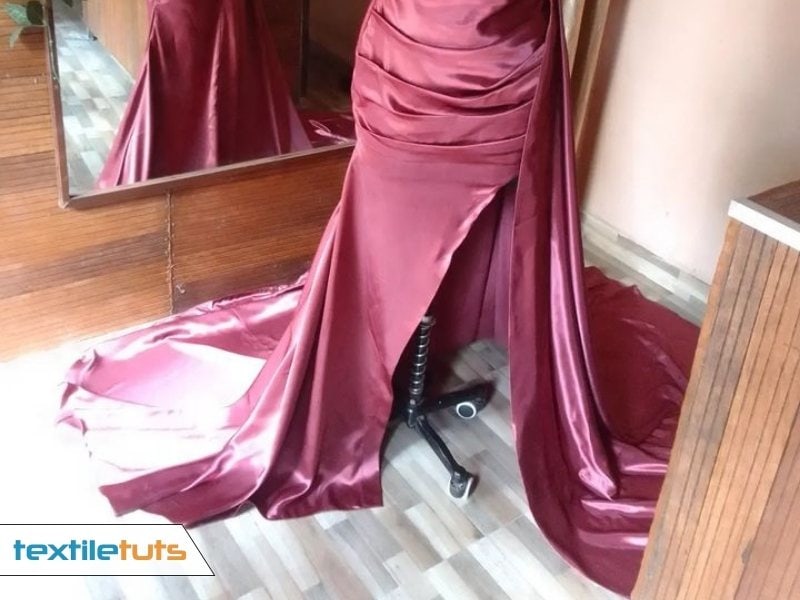Can Tailors Add Slits To Dresses? – Sizzling Fashion Trends
When it comes to clothing alterations, tailors have the expertise to make your clothes fit you like a glove. Whether it’s adjusting the hemline, taking in the waist, or shortening sleeves, tailors can transform a piece of clothing to look like it was made for you. But what about adding slits to dresses?
The good news is that tailors can indeed add slits to dresses, and it’s a relatively simple alteration. However, there are a few things to consider before making this change. For example, the type of dress material, the placement of the slit, and the style of the dress all play a role in determining if adding a slit is the right choice.
Today, I will explore the process of adding slits to dresses, including what to expect from the tailor, how to choose the right dress for the job, and what types of slits are available.
Is It Possible for Tailors to Add Slits into Dresses?
Yes, tailors can typically add slits to dresses. Adding slits to a dress involves cutting an opening in the fabric, usually along the side or back seam, to create a stylish opening that allows for easier movement and adds a touch of elegance to the garment.

If you have a dress that you would like to modify by adding slits, here’s what you can do:
Find a Skilled Tailor
Look for a tailor with experience in dress alterations and who has a good understanding of garment construction.
Choose the Location and Length of the Slit
Decide where you want the slit to be placed (side, front, or back) and determine the desired length. Slits can be short, starting at the knee, or can go higher up the thigh for a more daring look.
Discuss Your Preferences
Communicate your ideas and preferences to the tailor. They will help you understand the options and offer advice on the best approach for your dress.
Try on the Dress
The tailor will have you try on the dress so they can assess the fit and the positioning of the slits.
Make Adjustments
Based on the fitting, the tailor may mark the dress for the slit’s location and length. They may also need to take in or let out certain areas of the dress to ensure a proper fit after adding the slit.
Adding the Slit
The tailor will carefully cut the fabric to create the slit. They will then finish the edges to prevent fraying and give the slit a polished look.
Final Fitting
After adding the slit, you’ll try on the dress again to ensure everything fits as desired.
Preparing and Choosing Dress for Slit Customization
When preparing and choosing a dress for slit customization, there are several factors to consider to ensure a successful and stylish alteration.

Here’s a step-by-step guide to help you with the process:
Select the Right Dress
Choose a dress that is suitable for adding a slit. Dresses made from flowing fabrics like silk, satin, chiffon, or jersey tend to work well for slits, as they drape nicely and allow for comfortable movement. Body-hugging dresses like sheath or pencil dresses may also be suitable, depending on the slit’s location and length.
Dress Length
Decide on the desired dress length. The dress should be long enough to accommodate the slit without compromising its overall look. A midi or maxi dress is typically best for adding a modest slit, while shorter dresses can work for higher or more daring slits.
Slit Location
Determine where you want the slit to be placed – on the side, front, or back of the dress. Each location creates a different look and feel. Side slits are common and can be placed at the thigh or higher, while front and back slits can add a touch of drama.
Slit Length
Consider how high you want the slit to go. It can start at the knee, go up to mid-thigh, or even higher for a bold statement. Keep in mind that higher slits might require additional lining or safety measures to maintain modesty and comfort.
Consult with a Professional Tailor
Seek the expertise of a skilled tailor or dressmaker. They will help you assess whether your chosen dress is suitable for adding a slit and offer advice on the best slit location and length to complement your body shape and the dress’s design.
Fabric Matching
If the dress has patterns or prints, make sure the fabric pattern matches correctly after adding the slit. The tailor will take care of this during the customization process.
Trial Fitting
Before the actual alteration, have a fitting session with the tailor. This allows the tailor to pin the dress and show you the proposed slit location and length. You can then visualize how it will look and make any necessary adjustments before proceeding.
Finishing Options
Discuss with the tailor the type of finishing you prefer for the slit edges. Options include clean hemming, rolled hems, or adding a facing for a neater appearance.
Comfort and Movement
Ensure that the slit allows for comfortable movement. Test it out by walking, sitting, and moving around during the fitting to make sure it’s not too restrictive.
Accessorizing
Consider how you’ll accessorize the dress after adding the slit. Shoes, jewelry, and other accessories can complement the new style and complete your look.
DIY Tailoring Process: Adding Slits to Dresses
Adding slits to dresses can be a fun and creative DIY project if you have some basic sewing skills and the right tools. Here’s a step-by-step guide to help you through the process:

Materials Needed
Step 1: Choose the Dress
Select a dress that you want to add slits to. Consider the fabric, length, and style of the dress. Flowy fabrics like silk or chiffon work well for slits.
Step 2: Determine the Slit Location and Length
Try on the dress and decide where you want the slits to be placed (side, front, or back) and the desired length of the slits. Mark the locations with fabric chalk or pen.
Step 3: Measure and Mark
Use a measuring tape to ensure the slits are evenly placed. Mark the slit length and position on both sides of the dress.
Step 4: Create a Slit Template (Optional)
If you want the slits to be precise and identical, you can create a template from cardboard or paper. Place the template on one side of the dress and trace around it with fabric chalk.
Step 5: Pin the Dress
Carefully pin both sides of the dress together, making sure the marks align accurately.
Step 6: Cut the Slits
Using fabric scissors, cut along the marked lines. Be cautious not to cut through both layers of the dress; only cut one layer at a time.
Step 7: Finish the Edges
- Fold the raw edges of the slit under about ¼ inch and press with an iron to create a clean edge.
- Then, fold the edge over one more time, about ¼ inch, and press again.
- Pin the folded edges in place to secure them.
Step 8: Sew the Slits
- You can use a sewing machine or hand-sew the folded edges to secure the slits. Use a straight stitch or a zigzag stitch for added durability.
- Sew from the top of the slit down to the bottom, backstitching at the beginning and end to secure the stitches.
Step 9: Press the Slits
Once the slits are sewn, press them with an iron to give them a crisp look.
Step 10: Final Fitting
Try on the dress again to ensure the slits are comfortable and at the desired length.
Congratulations! You’ve successfully added slits to your dress. Be sure to inspect the finished slits, and if needed, make any adjustments before wearing the dress for a special occasion or event.
Care and Maintenance of Slit Dresses
Slit dresses require special care and maintenance to ensure they remain in good condition and retain their stylish appearance. Here are some tips for taking care of slit dresses:

Hand Washing or Gentle Machine Wash
Check the care label on your dress to determine the recommended cleaning method. If possible, hand wash the dress to avoid putting too much stress on the slit area. If using a washing machine, select a gentle cycle and place the dress in a mesh laundry bag to protect it from getting tangled or damaged.
Use Cold Water
When washing your slit dress, use cold water, as hot water can weaken the fabric and cause colors to fade. Cold water also helps to preserve the integrity of the fibers.
Avoid Harsh Detergents
Use a mild detergent specifically designed for delicate fabrics. Avoid using bleach or strong chemicals, as they can damage the fabric and affect the slit area.
Spot Cleaning
If there are only minor stains on your dress, consider spot cleaning the affected area with a gentle stain remover or mild soap. Always test the cleaner on a small, inconspicuous area first.
Dry Cleaning (if necessary)
For dresses made from delicate fabrics or with intricate embellishments, it’s best to take them to a professional dry cleaner for proper care.
Air Drying
After washing, avoid wringing the dress to remove excess water, as this can cause stretching and damage to the fabric. Instead, gently squeeze out the water and lay the dress flat on a clean towel to air dry. Avoid hanging the dress from the slit area, as it may stretch the fabric.
Ironing
If your dress needs ironing, use a low heat setting and iron it inside out to protect the fabric and slit area. Avoid ironing directly over the slits to prevent unwanted creases.
Store Properly
Hang your slit dresses in a cool, dry place with enough space to prevent wrinkles and distortion. Avoid overcrowding the closet to maintain the dress’s shape.
Avoid Sharp Objects
Be cautious when wearing jewelry or accessories that might catch on the slit edges. Sharp objects can cause snags and tears in the fabric.
Types of Slits are Available for Customization
There are various types of slits that can be added to dresses, each offering a unique style and level of openness. The choice of slit style depends on the dress design, the occasion, and personal preferences. Here are some common types of slits:

Side Slit
A side slit is a classic and versatile option. It can be placed on either side of the dress, starting from the hemline and going up to the desired length. Side slits allow for ease of movement and add a touch of sophistication to the dress.
Front Slit
A front slit is positioned at the center of the dress, starting from the hemline and going up the front of the dress. Front slits can vary in length, from a subtle opening at the knee to a daring high slit.
Back Slit
Similar to the front slit, a back slit is centered at the back of the dress, offering an elegant and alluring look. Back slits can be modest or more dramatic, depending on the desired style.
Thigh-High Slit
This type of slit starts at the hemline and goes up to the thigh, creating a bold and eye-catching statement. Thigh-high slits are often seen in evening gowns and dresses for special occasions.
Asymmetrical Slit
Asymmetrical slits are unique and add an element of visual interest to the dress. They can be placed diagonally, starting at one side and moving up towards the opposite side.
Slit with Underlay
Some slits are designed with an underlay, which provides additional coverage while still revealing a bit of skin. The underlay can be made of the same fabric as the dress or a contrasting material for added visual appeal.
Double Slit
Double slits feature two openings on either side of the dress, providing a more daring and modern look. This style is commonly seen in high-fashion designs and red-carpet dresses.
Curved Slit
Instead of a straight-line opening, some slits have a curved shape, which adds a soft and feminine touch to the dress.
Slit with Ruffles or Fringes
Slits can be enhanced with ruffles or fringes along the edges, creating a playful and trendy look.
Layered Slits
Layered slits involve multiple openings in the dress, adding dimension and movement to the garment.
Can Tailors also provide fast-track services for adding slits to dresses?
Yes, some tailors offer fast-track services for alterations, including adding slits to dresses. If you’re in a hurry and need this type of alteration, simply ask your tailor if they can “fasttrack your suit” to get it done quickly and to your satisfaction.
Final Words
Tailors can add slits to dresses with their professional skills and expertise. Discussing the desired slit length and placement with the tailor is importantto ensure the final result meets the client’s expectations.
With the proper technique and attention to detail, tailors can enhance the style and functionality of a dress by adding a slit.
By entrusting the job to a skilled tailor, you can enhance the look and function of your dress, creating a customized piece that reflects your personal style and comfort.

